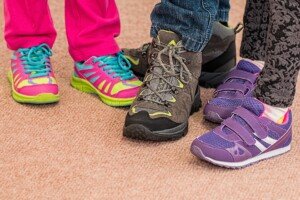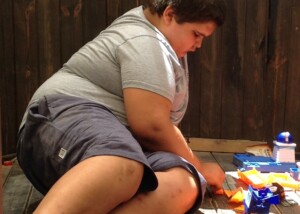
Are you concerned that your young child won’t have the stamina to keep up with all the walking you’ll be doing on your upcoming vacation?
It is said that young children have endless energy, but strangely enough, little legs often get very tired after nonstop walking, even if every so often there are breaks where the child is standing still – such as when parents are walking around town on vacation.
Kids even as young as five, seemingly with unlimited energy when playing outdoors, can fatigue quickly from extended walking.
But it doesn’t have to be this way. Kids are never too young to be trained to withstand prolonged walking.
How to Get Young Children to Be Fit Enough for Long Walks
“To help build endurance, parents should provide a healthy diet with minimal junk food plus increase the child’s activity level,” begins Dr. Lisa Lewis, MD, a board certified pediatrician in Fort Worth, Texas, and author of “Feed the Baby Hummus, Pediatrician-Backed Secrets from Cultures Around the World.”
“A healthy diet is low in ‘boxed food’ and rich in fruits, vegetables, nuts, dairy, lean meats and grains,” continues Dr. Lewis.
“Children need carbohydrates, but excess complex carbohydrates such as pasta and bread will make them sluggish. Even mild dehydration can affect endurance, so make sure the child is drinking plenty of water.”
Before you assume this is a matter of little legs trying to keep up with longer legs, or, to put it another way, a five year old’s natural stride being half that of an adult, there is some truth to this.
Imagine you yourself trying to keep pace with someone seven and a half feet tall.
However, parents will often slow down to minimize this imbalance, and yet, the child still tires fairly quickly. So there’s more to this than just longer legs outlasting shorter legs.
“Starting two months prior to the trip, take long walks with the child at least three times per week,” says Dr. Lewis.
“Also, have the child increase other activities daily such as biking, swimming, playing basketball and running.”
Take your child on a hike. This will train a little body to adapt to so-called rough walking: ambulation on uneven, lumpy terrain. Family-friendly hiking trails will provide this opportunity.
• Your child must wear socks and hiking footwear. NO sandals!
• Never let your child run ahead of you on a trail. If your child is begging to run ahead, then the other option is for YOU to run with them. If you can’t…well…you have some serious homework to do on your own fitness.
If you don’t live near any hiking trails, no problem: Just take your young kids out for extended walks.

Proper footwear is important for long walks.
Encourage them to leave their comfort zone as far as duration. If they begin complaining of fatigue, this is NOT a queue to stop.
It’s a queue to keep on going, as long as they are well-nourished and hydrated, and not in pain such as from a blister.
Certainly, don’t run your child ragged, either, but the best way to train a very young body to tolerate continuous walking is to continue walking after the first complaint of fatigue.
The total length of time should be close to what you anticipate on your vacation. Or, to play safe, just work up to 45 minutes.
If your child balks at walking before the session even begins, make it fun.
While walking, make up games, such as counting out loud how many people they pass or red cars that pass by. Start a fascinating conversation.
Never approach walking-time as a chore.
“Increasing exercise is a good lifelong habit, so after the trip, keep up the good work!” says Dr. Lewis.
There are numerous additional ways you can make walking “workouts” fun experiences for young kids. Check these out!
Having 25+ years’ experience, Dr. Lewis completed her pediatrics residency at Texas A&M University Health Science Center, Scott and White Memorial Hospital. For two years afterward she was assistant professor in the department of pediatrics at Texas A&M University Health Science Center.
 Lorra Garrick has been covering medical, fitness and cybersecurity topics for many years, having written thousands of articles for print magazines and websites, including as a ghostwriter. She’s also a former ACE-certified personal trainer.
Lorra Garrick has been covering medical, fitness and cybersecurity topics for many years, having written thousands of articles for print magazines and websites, including as a ghostwriter. She’s also a former ACE-certified personal trainer.
.



























